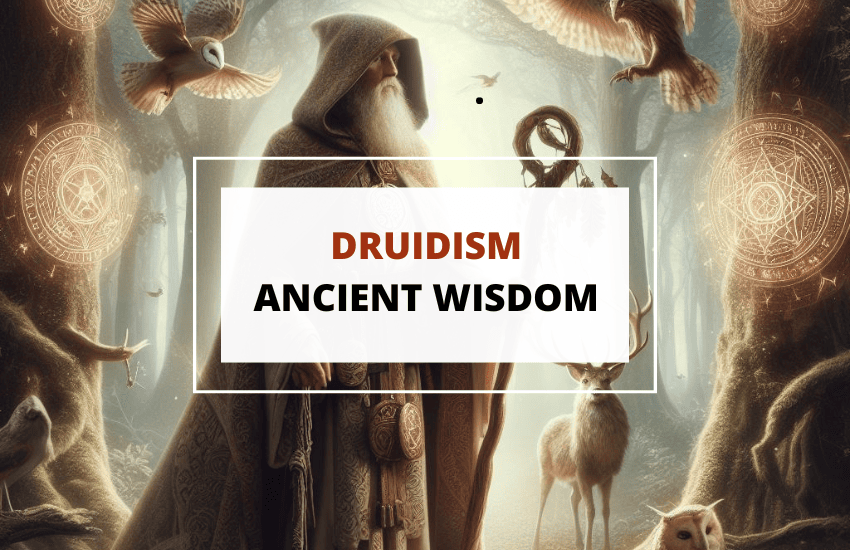
Table of Contents
Druidism is an ancient spiritual tradition from the Celtic cultures of Britain and Gaul, fascinating many people over the years. This practice focuses on a deep respect for nature and life’s interconnectedness, providing a distinctive spiritual outlook.
Today, modern Druids keep these rich traditions alive with rituals that promote environmental harmony, personal development, and community ties.
Origin and History of Druidism
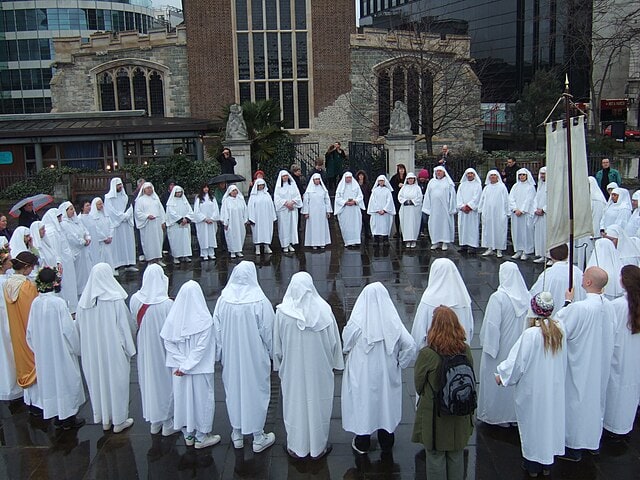
Druidism, or Druidry, originated in the Iron Age, linked to the ancient Celts of Britain, Ireland, and parts of what are now France, Belgium, Germany, and Italy. Druids were important figures in Celtic cultures, known for their roles as religious leaders, legal authorities, and advisors.
The exact origins of Druidism are unclear because the druids didn’t leave written records. Most of our knowledge comes from Roman and Greek historians and archaeological discoveries.
Druids are thought to have been part of a well-organized society, passing down their extensive knowledge and traditions orally. They were central to Celtic society, leading religious ceremonies, memorizing a vast array of knowledge and laws, and performing sacrifices.
Druidism developed over several centuries. By the time the Romans invaded Britain in the 1st century AD, druids were influential within Celtic societies. The Romans, led by Julius Caesar during his conquest of Gaul, both respected and distrusted the druids, eventually banning Druidism because it was seen as a threat to their control.
As Celtic societies declined and Christianity spread, Druidism gradually disappeared. It experienced a revival in the 18th century through “Druidic” orders in Britain, which were more social groups than true religious ones and based on a romantic view of ancient druids.
In the 20th century, Neo-Druidism emerged, drawing from both historical texts and modern ideas, including environmentalism and nature spirituality.
Today’s Druidism focuses heavily on nature, connection to the land, and Celtic traditions but varies widely in practice, incorporating elements of paganism, Wicca, and other spiritual beliefs. It is particularly concerned with celebrating the changing seasons and promoting environmental care.
Today, Druidism is a thriving part of the neo-pagan community, with followers worldwide engaging in practices that honor ancient Celtic heritage and the natural environment.
The Role of the Druids
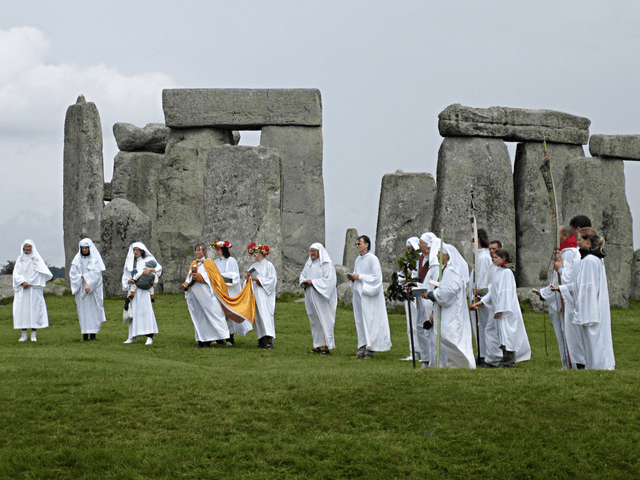
Historically, Druids were the intellectual elite among the Celts, fulfilling roles as priests, judges, lorekeepers, and royal advisors. The term “Druid” possibly derives from the Irish-Gaelic for “knower of the oak tree,” a symbol of wisdom. The extensive education to become a druid, spanning up to twenty years, involved memorizing laws, astronomy, genealogies, and mythology, crucial for preserving Celtic cultural heritage.
Druids were central to their communities, leading religious ceremonies, predicting events through divination, and setting dates for festivals based on celestial observations. They also acted as impartial mediators and lawkeepers, influencing political decisions and resolving conflicts, even during Roman invasions.
Their role resembled that of shamans, with deep knowledge of herbal remedies and serving as primary healers. They also acted as bridges between the physical world and the divine realm.
The practice of human sacrifice associated with Druids, often described in ancient Roman and Greek texts, remains controversial. These accounts, which may have been politically biased, depict Druids performing sacrifices to predict the future or during rituals. However, without direct written records from the Druids and only inconclusive archaeological evidence, the true nature and extent of these practices are still debated.
The Decline of the Druids
With the Roman conquest of Gaul and subsequent invasions into Britain, the Romans severely suppressed the Druids. They prohibited Druidic practices as they aimed to impose their own religious and governmental structures on the subjugated Celtic territories. As Christianity spread throughout Europe, it significantly reduced the roles and influence of the Druids.
Unlike other Roman-conquered regions, missionaries primarily spread Christianity in Ireland, not soldiers. This method allowed for a smoother integration of local customs and beliefs into the new religion. For instance, the Druids’ veneration of mistletoe as a sacred plant with mystical properties evolved into the Christmas tradition of hanging mistletoe.
Moreover, builders constructed many of the early Christian churches in Britain and Ireland on sites that Druidic tradition had previously considered sacred. This strategic placement facilitated a smoother transition and ensured that Christian Ireland would maintain a unique cultural identity.
This strategy proved effective. Although the explicit authority of the ancient Druids has waned, their enduring influence remains visible in Ireland’s landscape and cultural heritage.
Druidic Symbols and Tools
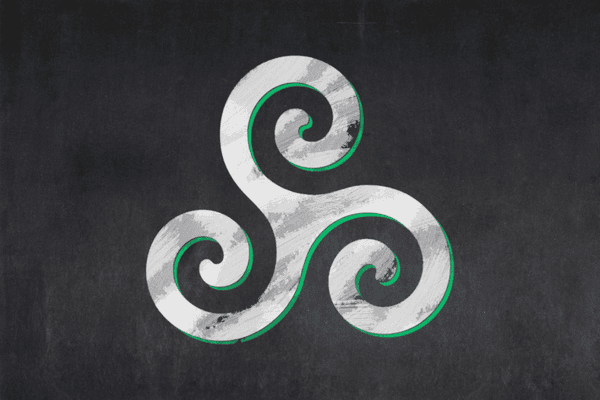
Druidism uses a variety of symbols and tools with significant spiritual meanings. Central to Druidic beliefs is a deep respect for nature, clearly shown through the sacred status of trees and plants.
For example, the oak tree symbolizes strength, endurance, and wisdom. Mistletoe, collected with special ceremonies, is cherished for its healing abilities and its role in rituals, representing peace and goodwill.
One key symbol in Druidry is the Triskelion. This ancient design, made of three interlocked spirals or bent human legs, stands for the three realms of land, sea, and sky, or the cycles of life, death, and rebirth. Its use highlights the significance of the number three and the connection among all life forces in the universe.
In their ceremonies, Druids also utilize various ritual tools, such as wands made from sacred woods, cauldrons that represent the goddess’s womb, and swords or sickles used in ceremonial harvests. Each tool is carefully chosen for its symbolic meaning to strengthen the spiritual connection and effectiveness of their rituals.
Together, these elements form a practice that links modern Druids to their ancient origins, celebrating and tapping into the mystical energy of the natural world.
The Rise of Druidism Today
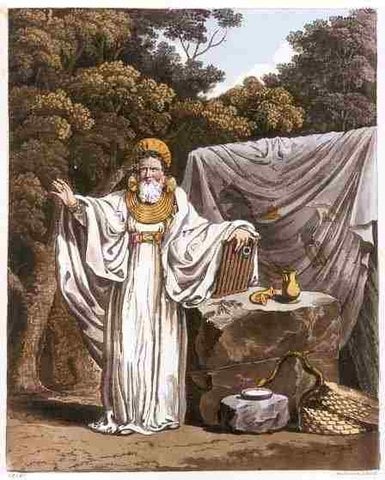
The resurgence of Druidism today marks a compelling revival of ancient spirituality that appeals to modern followers of nature-based beliefs. As part of the wider neopagan movement, contemporary Druidry deeply connects with the natural world and promotes living in harmony with the environment. This revival goes beyond simply recreating ancient ceremonies; it’s a dynamic, evolving practice that blends myths, traditions, and personal spirituality.
Modern Druidism is varied, with different groups and orders each applying the core values of respecting nature, promoting peace, and honoring all life in their own ways. These groups often focus on seasonal changes, environmental responsibility, and caring for the Earth, making their practices relevant to today’s ecological issues. Rituals and ceremonies, typically held at ancient sites and natural settings, emphasize the sacredness of nature and strive to build spiritual connections with the land, ancestors, and Celtic gods.
The growth of Druidism is also helped by its inclusiveness and flexibility, welcoming individuals from diverse backgrounds who seek a spirituality that celebrates life’s interconnectedness and the critical importance of preserving the natural world for future generations. This revival continues to offer a path that is both spiritually rewarding and environmentally conscious.
Wrapping Up
By adopting the traditions and insights of the Druids, modern followers gain spiritual satisfaction and a renewed dedication to caring for the environment. As this age-old path grows, it provides a strong foundation for living in harmony with our surroundings, ensuring that the Druids’ legacy enriches our lives and steers us toward a more sustainable future.








